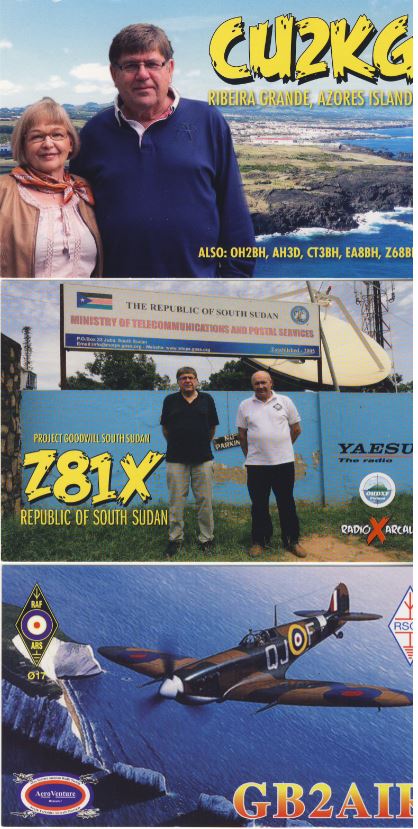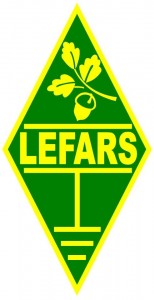LEFARS QSL and Logbooks
About two years ago Marc Litchman G0TOC ( Silent Key ) approached me to take over running the club’s logbooks and be the QSL manager as his illness at that time made it difficult for him to do.
The QSL and logging system at the that time utilised hand written paper logs transcribed onto an Excel sheet which as Marc himself admitted was very time consuming. It was also a challenge to read the logs following an event as operators normal handwriting turned into spider’s writing which was challenging to decode resulting in callsign mistakes. The use of Excel also made it very difficult to search for callsigns especially if an operator had applied for one of the LEFARS awards.
In view of this the decision was made to bring logging into the 21st century and change from paper logging into computer logging. From research it became obvious that the most popular and indeed the simplest to operate program was N1MM+ due to a simple layout and if required it has a more complex side enabling contest operation with many different user defined configurations available to customise the program. For our use however the simple layout shown below is used.

As you can logging input is done at the bottom with an online live log at the top. Once the activation is finished then the log is saved as an adif file which is the standard file system used for computer logging. More information about N1MM+ can be found here at https://n1mmwp.hamdocs.com/ with information about the adif file format can be found here https://wikitia.com/wiki/Amateur_Data_Interchange_Format_%28ADIF%29
N1MM+ interfaces with the transceiver in use and can import various data and saves into the adif file, this data as an adif file can then imported into whatever computer logging program you use for display and interrogation.
As you can imagine importing all the logging information from many excel sheets into an adif format manually would be a task longer than the current Brexit negotiations however luckily this task has been simplified by several excel macros that have been written for that purpose. The process however still took a fair amount of time due to variations on the excel logs and error checking. For each callsign used I have generated an adif file and then combined them into one LEFARS file. At present a read only copy of these files are stored on Dropbox and can be made available for any member via simple email link although in the future it is envisaged to have access via the new club website. So far we have 13852 contacts stored going back to 2000 although there were three activations prior to that for which I have no logs for. These are GB3LOU Loughton Fair Week in 1963, GB25LRS 25th Anniversary of Loughton Radio Society in 1987 and GB75LRS 75th Anniversary of the RSGB in 1988, any log information on those would be helpful.
Since 1963 the club has operated these special event callsigns:
GB0IS Theydon Bois Donkey Derby, GB0TBW Trinity Buoy Wharf ( ILLW ), GB1HS 1st Hainault Scouts, GB2AVF Abridge Village Fete, GB2BHM Blake Hall Museum, GB2ECS Essex County Show, GB2EFC Epping Forest College, GB2EFF Epping Forest Festival, GB2HSF Hereward School Fete, GB2LRS Loughton Radio Society, GB2MGA Matching Green Airfield, GB2NWA North Weald Airfield, GB2RGM Royal Gunpowder Mills, GB2TI Tune In, GB2VDW Veterans Day Weekend, GB3LOU Loughton Fair Week, GB4OLR 40th Anniversary of Loughton Radio Society, GB5OLR 50th Anniversary of Loughton Radio Society, GB6EHL Queen Elizabeth’s Hunting Lodge, GB25LRS 25th Anniversary of Loughton Radio Society, GB75LRS 75th Anniversary of the RSGB, GB100NWA 100th Anniversary of North Weald Airfield and GB125EF Epping Forest Festival. Information on all of these can be found at the G4ONP QRZ.COM page at https://www.qrz.com/
Below are club QSL cards used over the years





A few QSL cards received







